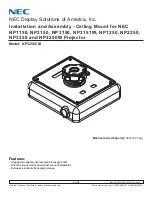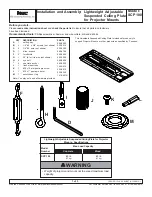
36
GREEN MOTION BUILDING INSTALLATION MANUAL
MN191028EN January 2022 www.eaton.com
00 Title
Example
Three EV chargers will be installed in a building with a maximum current capacity of 100 A. The maximum load of all
other installed equipment is 60 A. The electrical infrastructure supplying the EV chargers can supply 50 A. There is an
energy meter present and EV charger 1 is reserved for an essential service vehicle that should always be charged as
fast as possible. The parameters for the three EV chargers in this case should be as follows:
For an energy meter reading of 80 A
The algorithm, in this case, will subtract the energy meter reading from the MAXIMUM CURRENT CAPACITY OF
THE BUILDING: 100 A – 80 A = 20 A. This value is LOWER than the MAXIMUM AVAILABLE CURRENT FOR EV
CHARGING, therefore this value (20 A) is used as the total available current for EV charging. EV charger 1 has a
PRIORITY OF EV CHARGER of 10, which means that most, if not all, the current will be used by EV charger 1.
For an energy meter reading of 20 A
The algorithm, in this case, will subtract the energy meter reading from the MAXIMUM CURRENT CAPACITY OF
THE BUILDING: 100 A – 20 A = 80 A. This value is HIGHER than the MAXIMUM AVAILABLE CURRENT FOR EV
CHARGING, therefore the parameter Maximum available current for EV charging (50 A) is used as the total available
current for EV charging. EV charger 1 has a PRIORITY OF EV CHARGER of 10, which means that EV charger 1
will charge faster and EV chargers 2 and 3 (PRIORITY OF EV CHARGER of 5) will divide the remainder of the total
available current.
(7)
The electrical infrastructure supplying the EV chargers can supply 50 A.
EV charger 1
EV charger 2
EV charger 3
Dynamic load balancing enabled
Yes
Yes
Yes
Mode
Master
Node
Node
Phase balancing limit
N/A,
see Section 8.3
N/A,
see Section 8.3
N/A,
see Section 8.3
Energy meter enabled
Yes
Yes
Yes
Maximum available current for EV charging
(7)
50 A
50 A
50 A
Maximum current capacity of the building
100 A
100 A
100 A
Priority of EV charger
10
5
5
8.3 Phase balancing
For grid stability, the difference in current between phases should be limited as large differences decrease the
power quality.
In EV charging, the phase imbalance is created when there is simultaneous three-phase charging, two-phase charging,
and one-phase charging. Most cars that charge in one phase use L1, hence increasing the difference in the current of
L1 and the currents of the other phases.
To ensure grid stability, it is good practice to alternate the phase connections during installation to have a robust and
optimized system.
On top of that, the Green Motion Building EV charger is equipped with a phase balancing algorithm that allows for a
continuous monitoring and balancing of the phase current, ensuring grid stability at all times.
Alternating the phase connections
The schematics in Figure 23 explain how to wire multiple Green Motion Building EV chargers.
Step 1
. Connect the wires of EV charger 1 in the numerical order of phases (L1 on terminal L1, L2 on terminal L2 and
L3 on terminal L3).
Step 2 .
Connect the wires of EV charger 2 with the phases alternated one way (L2 on terminal L1, L3 on terminal L2
and L1 on terminal L3)
Step 3 .
Connect the wires of EV charger 3 with the phases alternated the other way (L3 on terminal L1, L1 on terminal
L2 and L2 on terminal L3).
Table 12 . Example of static load balancing













































